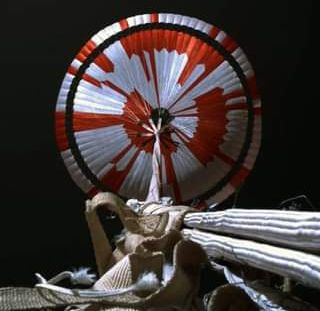Protected land reserved for Brazil’s indigenous communities is being traded on the social network.




New research throws wide open the amount of information that can be simultaneously transmitted by a single light source.
Researchers at the University of California, Berkeley, have found a new way to harness properties of light waves that can radically increase the amount of data they carry. They demonstrated the emission of discrete twisting laser beams from antennas made up of concentric rings roughly equal to the diameter of a human hair, small enough to be placed on computer chips.
The new work, reported in a paper published Thursday, February 252021, in the journal Nature Physics, throws wide open the amount of information that can be multiplexed, or simultaneously transmitted, by a coherent light source. A common example of multiplexing is the transmission of multiple telephone calls over a single wire, but there had been fundamental limits to the number of coherent twisted lightwaves that could be directly multiplexed.
Voyager Station will be able to accommodate 400 guests, its builders say.
Orbital Assembly Corp. recently unveiled new details about its ambitious Voyager Station, which is projected to be the first commercial space station operating with artificial gravity.


Great new episode with the details on how NASA JPL’s successful Mars rover program kept the Perseverance rover on track. JPL chief engineer Rob Manning gives us an inside look at the strategies NASA used to make sure the latest rover made a spectacular landing.
NASA’s Rob Manning, JPL’s Chief Engineer, discusses management, logistics, innovation and the future of robotic Mars exploration in this unique episode. With this week’s successful landing of the Perseverance rover on an ancient river delta, NASA ups its game at a time when the rest of the country badly needs some encouraging news. Manning talks about how JPL keeps itself on track when finessing complicated billion-dollar initiatives.

Get a guided tour of the Perseverance rover landing on the red planet from NASA Jet Propulsion Laboratory engineer Ian Clark:

A video of Martian Ripples in the highest quality. All the images you’re going to see are taken by NASA rovers and orbiters in Mars, boosted in quality with AI technology.
The wind has shaped the Martian landscape for much of its history and continues to play a major role today. Here we analyzed Martian Ripples and the similarities they have the ripples here on Earth.
Other information that can be found in this video:
📌- Real images of Martian Ripples.
📌- The density of the Martian Atmosphere.
📌- How these ripples are created?!
📌- Size of Martian Ripples.
📌- Rover’s Tire Track on Mars (image)
📌- Perseverance rover mission.

With two missions due to land on Mars in 2021, we look back at 60 years of attempts to get to the Red Planet.